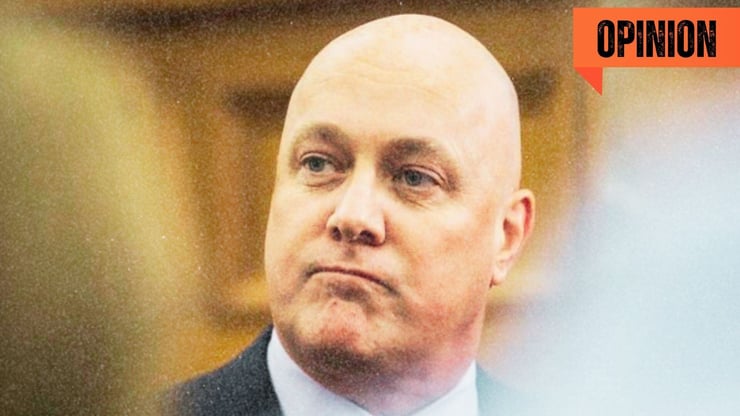2025: Can Luxon Deliver For Kiwi-Indians

The year 2025 will be pivotal for Prime Minister Christopher Luxon’s India strategy and, by extension, for Kiwi-Indians. As Luxon approaches the halfway mark of his term, his anticipated visit to India will either solidify or squander his pitch that India represents a colossal opportunity.
Luxon has projected India as a missed opportunity for New Zealand. The country’s growth story is phenomenal, he says, and consumer appetite so rich New Zealand needs to so much as only cast its products and services in the market and reap quick benefits.
Over the last decade, New Zealand hasn’t so much as moved a finger on its relations with India. The last real efforts were made as far back as 2016, by then prime minister John Key. Successive governments have put the India relationship in cold storage. The mood turned frosty-almost inhospitable-when in 2022, while sharing the stage with her Indian counterpart S Jaishankar, former foreign minister Nanaia Mahuta said a free trade agreement (FTA) with India wasn’t a priority for her government.
Skeptics argue that an FTA with India remains an unlikely prospect. India doesn’t want to buy dairy, New Zealand’s primary export. The question, then, is: What’s in it for New Zealand?
Advocates for deeper ties with India counter that an FTA should not be the immediate objective. Instead, they propose starting small—building tactical partnerships in sectors such as agriculture, education, and fintech. These incremental steps could lay the groundwork for trust and mutual respect, which are essential precursors to any comprehensive trade agreement.
Luxon, however, has publicly championed the dream of an FTA, a stance that critics argue may have overinflated expectations. He has been bullish, nevertheless, and has put his money where his mouth is. Trade Minister Todd McClay has met his Indian counterpart several times in the last 12 months. He has visited India and networked on the ground more frequently than any of his predecessors in the last decade.
When it comes to building relations with India, you could question Luxon’s ambitions but not his intentions. In October, Luxon met Indian Prime Minister Narendra Modi on the sidelines of a summit in Laos, signaling his seriousness about fostering a rapport. His planned visit to India next year will be a blank canvas, offering an opportunity to make meaningful strides. Success will hinge on his ability to align lofty ambitions with pragmatic steps.
While Luxon focuses on the big-picture relationship with India, another significant issue looms closer to home for Kiwi-Indians: the long-term visa for parents of migrants. Immigration Minister Erica Stanford has made this a key promise, echoed by the ACT Party, the National Party’s coalition partner. The visa policy is etched in public memory as an election commitment, but the lack of visible progress is eroding trust.
Stanford acknowledges the complexity of the proposal. She has cited prohibitive costs, particularly the high price of medical insurance for elderly visitors, as a significant barrier. But for many Kiwi-Indians, these explanations ring hollow. They expected action on the parent visa soon after the government took office. Instead, Stanford prioritised fixing systemic flaws in the Accredited Employer Work Visa (AEWV) scheme, which was riddled with abuse and inefficiencies. Addressing these issues was undoubtedly necessary, but the delay in tackling the parent visa has left many disappointed.
Stanford’s handling of the parent visa promise is quickly becoming a perception problem. Her repeated assertions that the proposal is being “dabbled with” lack the decisive action that voters demand. Kiwi-Indians, who are deeply invested in this issue, need more than vague reassurances. They need clear timelines, visible progress, and, most importantly, results.
The coming months present Stanford with an opportunity to rebuild trust. As early as possible next year, she must demonstrate a genuine commitment to delivering the parent visa. This means not just behind-the-scenes policy work but also transparent communication with the public about the challenges, costs, and timelines involved. Kiwi-Indians are willing to engage with the realities of the proposal, but only if they see a government that is equally invested.
Both Luxon and Stanford face crucial tests in 2025. For Luxon, his India visit will be a litmus test of his ability to turn rhetoric into reality. If he can secure tangible outcomes—whether through trade, education, or other partnerships—he will not only advance New Zealand’s interests but also solidify his standing as a leader with vision and follow-through.
For Stanford, the stakes are equally high. The parent visa issue is not merely a policy challenge; it is a symbol of her government’s commitment to migrant communities. Failure to deliver on this promise risks alienating a key constituency whose support was instrumental in bringing the National-ACT coalition to power.
The clock is ticking, and expectations are high. Success in these endeavors will not only define the year but could also shape the trajectory of their political legacies. As Luxon steps onto the world stage and Stanford navigates domestic challenges, the eyes of Kiwi-Indians—and the nation—will be watching.



